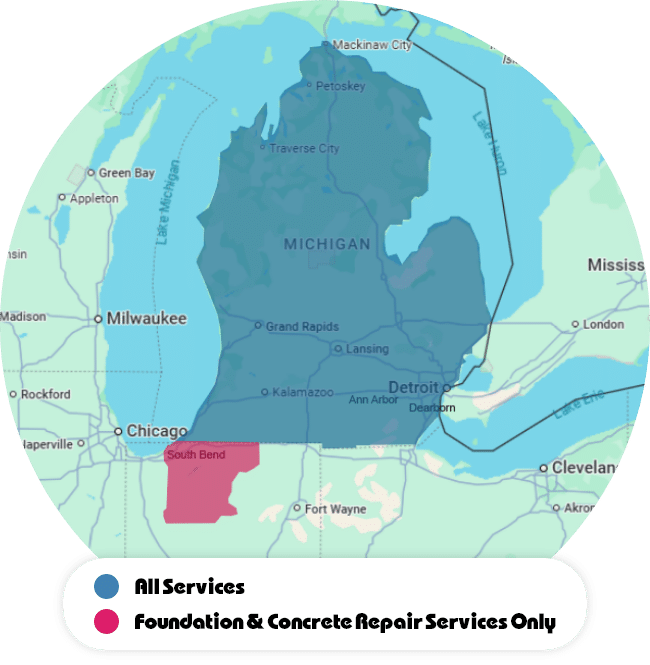Wall Cracks 101

Like many people, you might be spending a lot of time at home these days, and you might notice things you would’ve otherwise overlooked. A big entry on the often overlooked list? Wall cracks.
Now, no wall crack is a GOOD wall crack to find - at best, they’re an unattractive nuisance. But let’s go over the common types you might find upstairs and downstairs in your home.
Upstairs
Most of the cracks you find in the main living area of your home are going to be around doors, windows, and archways. These are naturally weaker points because of the cutouts and so are the first to show signs of stress. There are two kinds of cracks, and one crack that isn’t a crack at all, that you’re likely to see upstairs.
Vertical: You may see hairline vertical cracks - they generally aren’t a sign of trouble, but just of the natural unilateral settling that occurs in the construction of a home. How many you see depends on how good your contractor was. I stare at one in my living room every day because the company that originally built the house didn’t have very strong attention to detail. Keep an eye on cracks like this lengthening or expanding, because that means something is shifting.
Diagonal: A diagonal crack coming from a door or window frame or archway is a huge red flag. These cracks occur when the house begins to settle off-kilter, like in the instance of just one side of the house sinking. Unlike vertical cracks, which are largely superficial and don’t change after the initial settlement, you’ll see steady expansion of a diagonal crack. Put some kind of mark - pencil or even a piece of tape - at the end of the crack and check up on it once in a while.
Not a Crack - Drywall Seams: I wanted to mention this because it’s very, very easy to see drywall seams and think you have cracks. This is one of those attention to detail things, but if your contractor didn’t mud the drywall boards well, you may see the seams (especially on the ceiling). At first glance, they look like hairline cracks, but upon closer inspection you’ll notice that they’re perfectly straight and usually run the full length of the room. Don’t worry about it.
Downstairs
Vertical: Much like upstairs cracks, you may see natural construction settlement cracks in the concrete of your poured foundation. These will be thin and almost wispy and you won’t see expansion.
Horizontal: Horizontal cracks in a block or poured foundation are a sign of bowing walls. This means that pressure is being exerted on some part of the wall, usually by the soil (infringing tree roots can also be a culprit). If the pressure is centered toward the top, you’ll see a tilt to the wall, but if it’s more toward the middle you’ll get wide cracks and bulging. These cracks expand over time as pressure continues and are a sign of danger.
Stair Step: Stair step cracks are exclusive to block walls and occur as the aforementioned pressure causes a crack to follow the mortar between blocks. As the mortar between blocks is compromised, the likelihood of collapse increases.
--
When it comes to wall cracks, it’s better safe than sorry; if you have any cracks at all, especially if they’re new, don’t hesitate to call us for a free inspection. Maybe they’ll be superficial or maybe they’ll be a sign of problems with your foundation - in the latter case, it’s easier and less expensive to repair the issues early than wake up one morning with a wall caved in. Call today and don’t spent the spring worrying.









